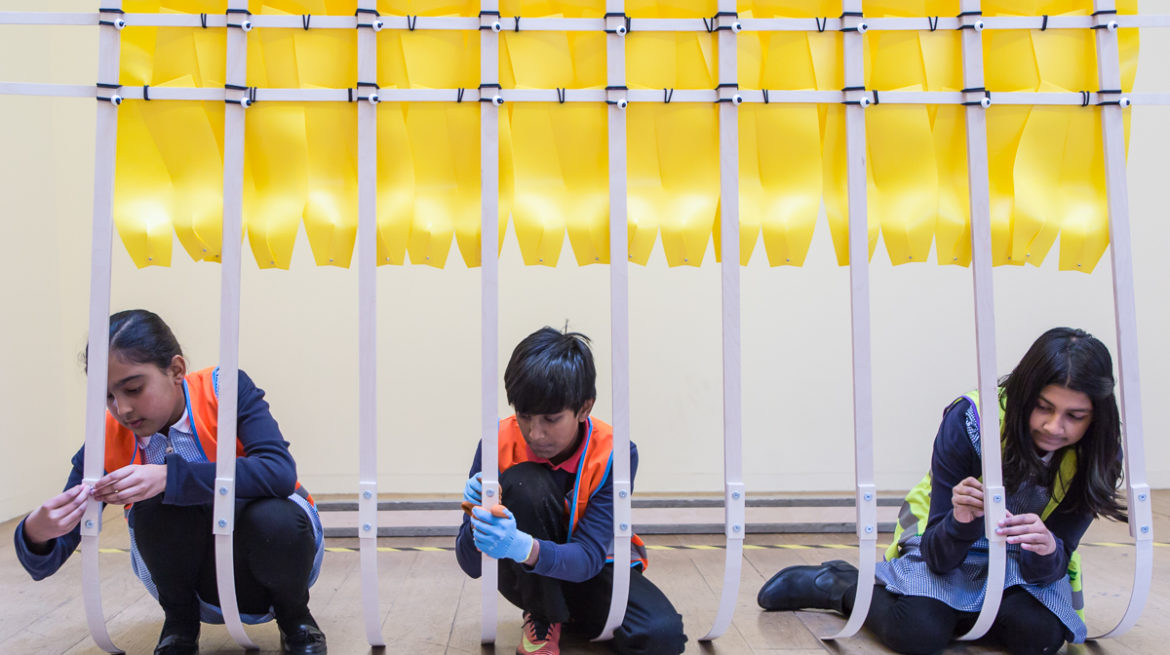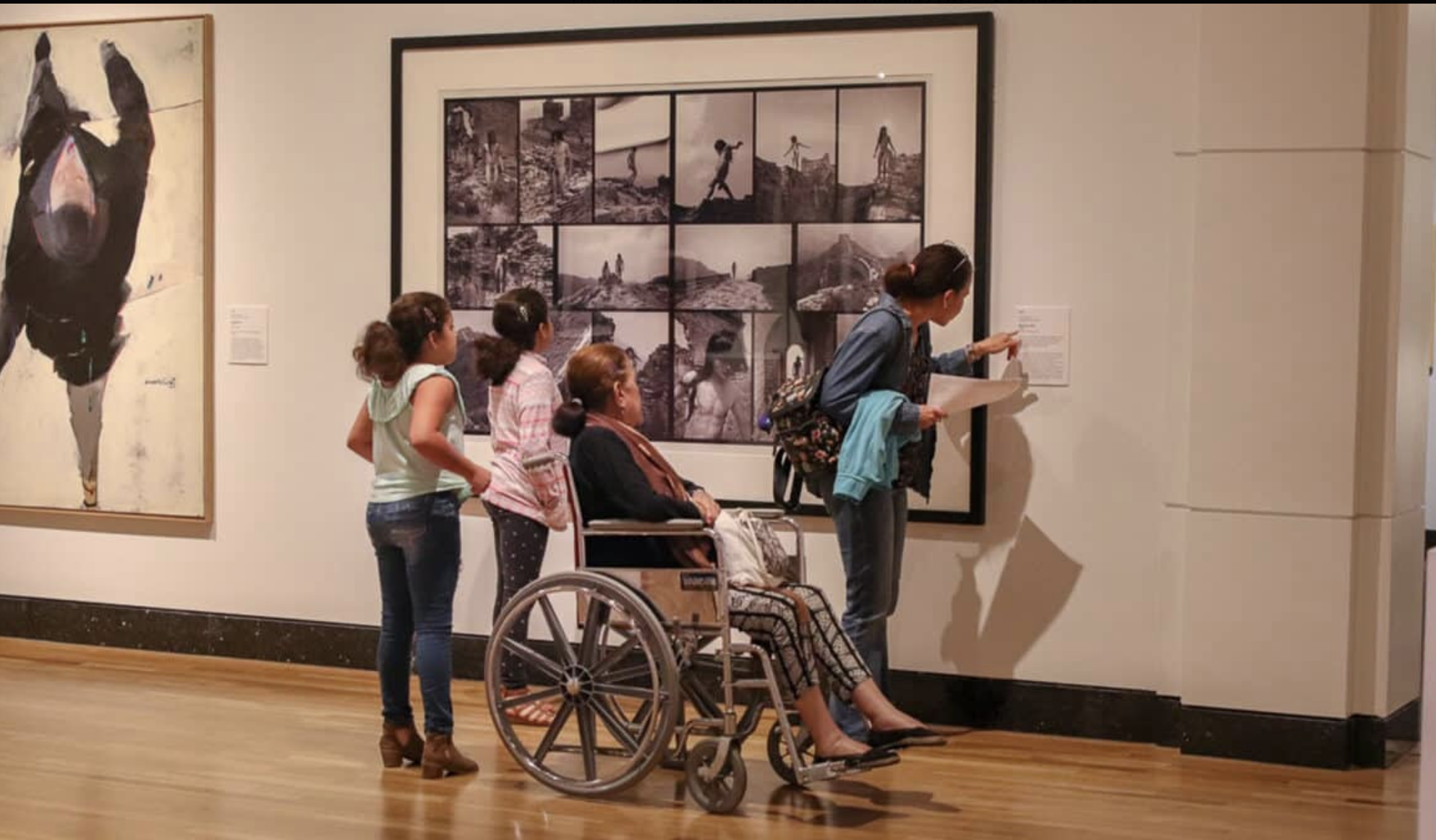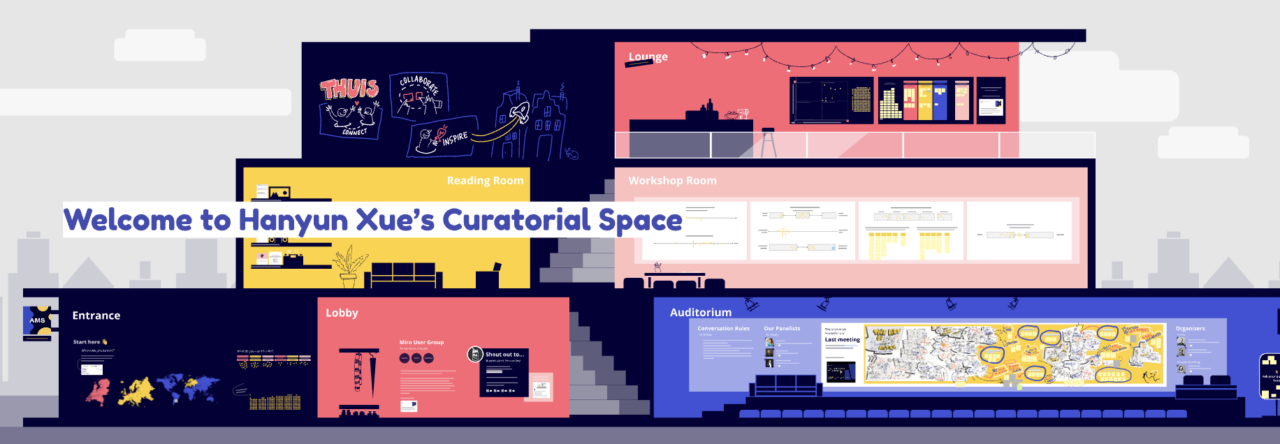Who Do I Curate For?
That’s the question I’ve been asking myself. When I first started curating an exhibition, I subconsciously imagined that the “audience” was a group of people who took the initiative to come to the exhibition, perhaps from the academic circle, the art circle, and people with curatorial backgrounds. But I soon discovered that in the lobby of the ECA building, which I had chosen as an exhibition space, it was a very different group of people who actually walked into the space every day.
I think of the first-year students who rush to class with headphones, the CAP students who practice their work in the hallways, the graduate students who pass by the library after class, and even the staff members who never voluntarily enter the exhibition but walk through the lobby every day.
I slowly realized: I wanted to curate for these people.
They may not be the kind of people “scheduled” to see the exhibition, but their bodies have already entered the space. So I started to adjust my design thinking – not thinking about “how to attract them to come in”, but “how to make them find themselves already in it”.
I wanted a fluid system: for the curators to follow the pace of the people, not for people to stop to watch. My goal is: when they pass by, there is a voice, a piece of paper, a word, a story left by others, so that they can feel: you are welcome here, and you are needed.
For me, it’s no longer about “providing viewers with a viewing experience,” but inviting them to be a part of the exhibition, if only in one sentence, one vote, one look back.
Access as a Curatorial Method, Not an Add-On
I’ve been deeply influenced by Nina Simon’s The Participatory Museum, which emphasizes the difference between designing for access and simply declaring openness. Access is something you build structurally. Not just a door you leave ajar.
Paul O’Neill and Mick Wilson’s idea of the “educational turn” also shaped my thinking. They describe curating as an expanded pedagogical practice—an approach that welcomes learning, co-authorship, and multiple publics into the meaning-making process (O’Neill and Wilson 2015). That philosophy gave me language for what I wanted to do: create learning environments through affect, conversation, and shared authorship—not just through information.
Similarly, Gevers’ notion of “opening interpretive contexts” (2013) reminded me that access isn’t only about physical or linguistic entry—it’s about making meaning flexible. That’s what my use of the Woolclap platform aims to do. Visitors leave their interpretations in any language, any tone—serious, poetic, messy, raw—and these accumulate daily into a curatorial text that reflects the plurality of response, not a polished consensus.
 (Myзeй coвpeMeHHoгo иcKyccтвa -Participatory Art Practices)
(Myзeй coвpeMeHHoгo иcKyccтвa -Participatory Art Practices)
Who They Are, Why They Matter, and How They Shape the Exhibition
🟩 ECA Students (Everyday Walkers & Accidental Curators)
- Why they matter: They are the natural inhabitants of the exhibition space (ECA Main Lobby), moving through it daily.
- How they’re invited: Interactive elements are embedded into their routes: quick-vote boards, “rename this space” tags, tactile floor guides.
- How they influence the show: Their constant presence triggers live changes—votes impact layout every three days; texts uploaded to Woolclap appear in evolving curatorial walls. They leave, the wall shifts.
🟦 International & Multilingual Visitors (Cross-Cultural Interpreters)
- Why they matter: The ECA community is multilingual, and language often becomes an invisible barrier to art interpretation.
- How they’re invited: TESOL students helped co-create tri-lingual signage (Mandarin, Arabic, English), translated instructions on interactive devices, and hosted “quiet read-aloud” audio guides.
- How they influence the show: Different languages generate different texts. Visitors’ entries are recorded in their native tongue, creating a multilingual curatorial layer.
🟨 Children & Local Schools (Young Co-Authors)
- Why they matter: Children are not future audiences—they are current participants with unique perspectives.
- How they’re invited: Through Art Education partners, we host child-led walkthroughs, sticker trails, “draw your exhibition” corners.
-
How they influence the show: Their illustrations and responses are integrated into the wall projections. Their questions become public prompts.
 (How to… Curate Participatory Art Projects – Schools and Teachers
(How to… Curate Participatory Art Projects – Schools and TeachersInstallation workshop view of MATT+FIONA: Room For Art, Whitechapel Gallery, 2017. Photo: Rob Harris)
🟪 Designing for Difference
- Why they matter: Decentralisation is meaningless if access is unequally distributed.
Blind and Visually Impaired Participants
I don’t have high-tech AR headsets or braille printers, but I do have people—and intention. I plan to station trained volunteers, especially those from Art Education and Inclusive Practice, to offer descriptive exhibition walkthroughs. These will be paired with verbal cue cards and tactile maps, so that no one has to ask if they’re “allowed” in.
Many of the artworks—particularly sound-based and tactile installations—offer sensory routes that go beyond vision. In fact, the voice-sharing station, where audiences can record their own interpretation of the work, becomes a central space for blind visitors to contribute.
Neurodivergent & Sensory-Sensitive Visitors
Some people need less noise. I’ve set designated quiet hours where lighting is softened and sound devices are paused. At all times, tactile signage and paper-based voting and feedback tools offer alternatives to touchscreens and noise-reactive installations. There’s also a rest corner, where sitting is not a withdrawal from art, but a way to meet it more slowly.
What I find most moving about this group’s inclusion is how it shapes the rhythm of the show. Their pace becomes the exhibition’s pace. Their silences aren’t gaps, but textures in the curatorial soundscape.
Deaf and Hard-of-Hearing Participants
With TESOL and Inclusive Design partners, we’re preparing multi-language signage, captioned welcome videos, and clear visual prompts at each station. More importantly, activities like the naming map, the co-writing wall, and the feedback sticker zone all rely on visual language. No interpreter needed to understand your right to contribute.
How they influence the show: Their pacing, interpretation, and silence become part of the curatorial texture. The exhibition expands to include rest.

(Accessibility-Inclusive Art Museum -Harn Museum of Art)
Accessibility as a Method, Not an Afterthought
Inspired by W9–W10 discussions on publics and ethics, I no longer treat accessibility as a set of “adjustments.”
It is the structure itself.
Designing an open-ended, multi-sensory exhibition is not just about equity—it is a political gesture.
If a child can rename a space, if a non-English speaker can write the wall text, if silence becomes narrative—then I’ve shifted the power of meaning-making.
Case Studies & Theoretical References
-
Nina Simon’s The Participatory Museum (2010)
→ Advocates for active audience roles in shaping exhibitions, particularly those who “don’t feel like insiders.” -
Gwangju Biennale’s “Roundtable Curating” (2008)
→ A circular model of decision-making, bringing in audiences and collaborators to co-shape the biennale’s meaning.
→ Supports audience co-authorship and decentralised authorship. -
DisplayCult (Drobnick & Fisher) in The Artist as Curator (2016)
→ Promotes “affective curation,” where feeling and sensory engagement are modes of access.
→ Encourages multi-sensory, multi-lingual approaches to curating for diverse publics. -
Gevers (2013) on “creating contexts”
→ Curating as the act of opening up intersubjective spaces for new social encounters.
→ Resonates with my open-ended “living wall of meaning.” -
Sheikh (2010)
→ Highlights the fragmentation of the public and the need to build curating around plural publics, not a singular mass.



Leave a Reply